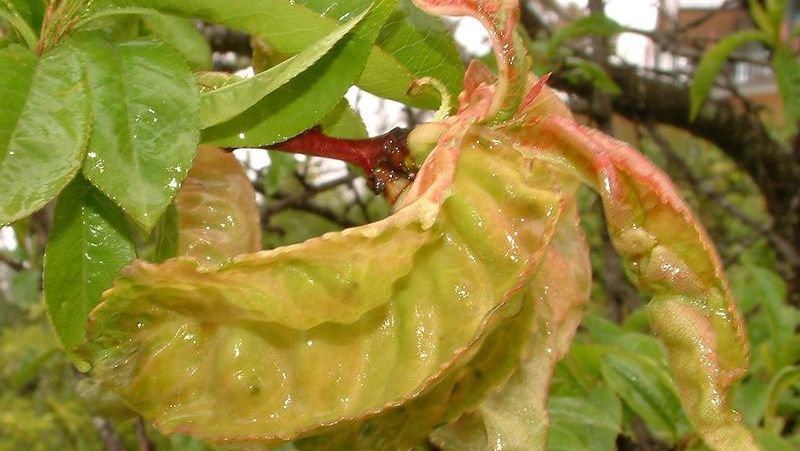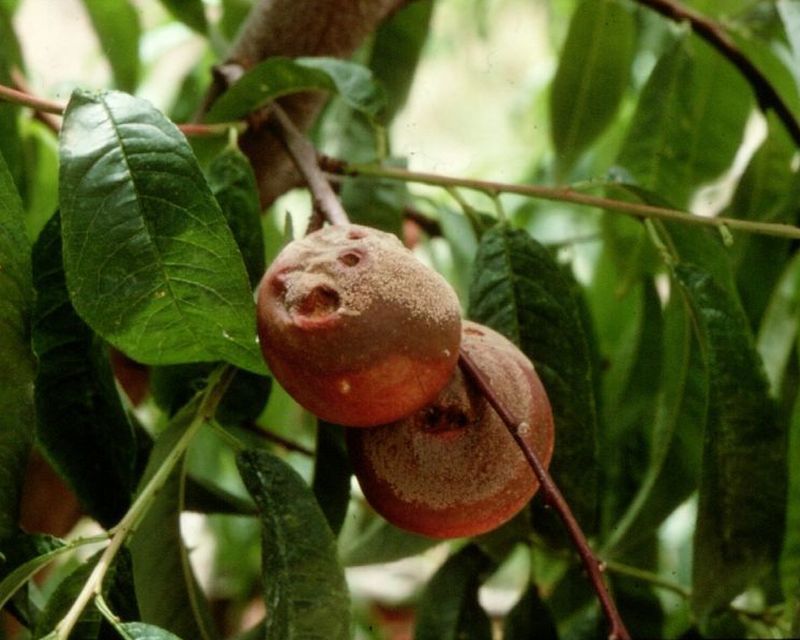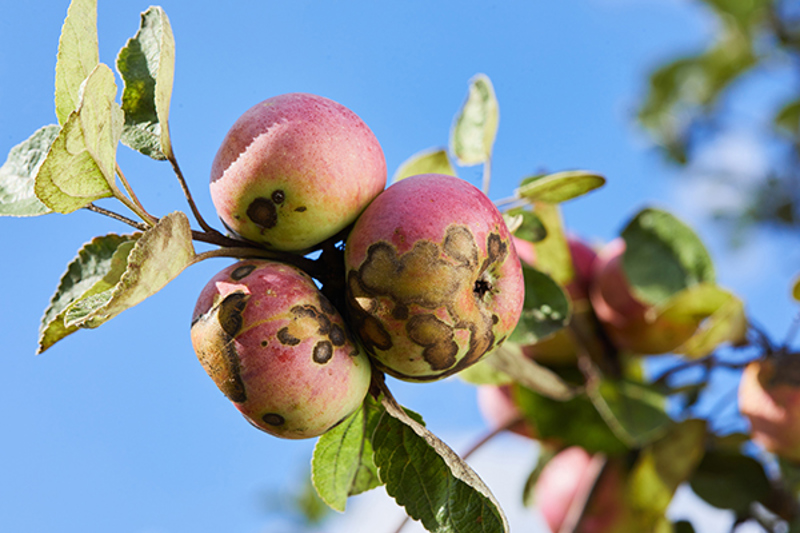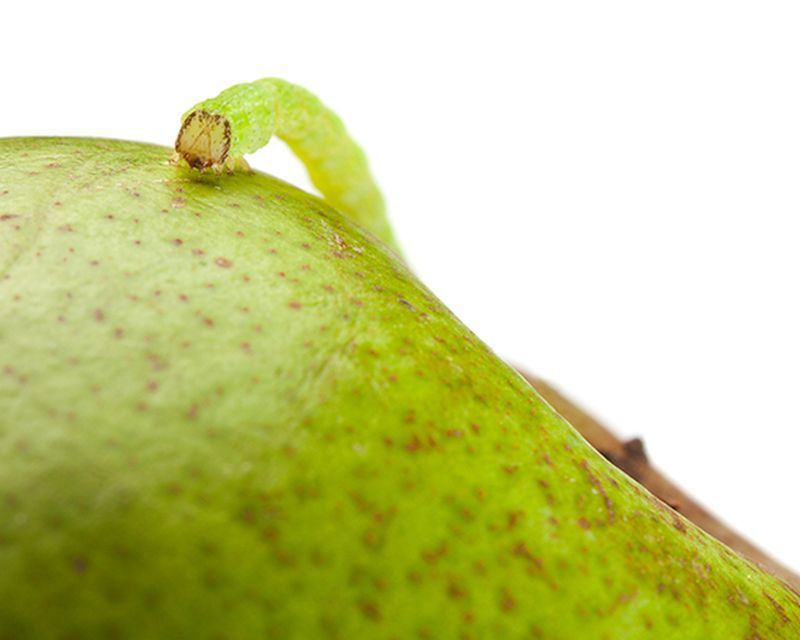Yates Account
Join now
Create a Yates account today!
Sign up to join the Yates Garden Club for monthly e-mails packed with seasonal inspiration, tips for success & exclusive promotions.
Plus if you’re a Garden Club member you can take part in the Yates Growing Community - a blog to share successes, get advice & win prizes in fun challenges along the way!

Forgot password
Enter the email address associated with your account, and we'll email you a new password.

Most diseases and pests of stonefruit and pipfruit can be prevented, by proactively treating trees so they can't get started.
Read on for tips on how to diagnose these common nasties...and how to head them off.
How to Prevent Leaf Curl
- Distorted and discoloured foliage on stone fruit trees, like peaches, nectarines and plums, is caused by a fungal disease called Leaf Curl. The tree ends up looking awful and in severe cases it reduces the tree’s ability to photosynthesise, which in turn can affect plant health and fruit yield. Winter is the time to act to prevent this disease, so get the sprayer ready!
- Leaf curl disease spores lurk in bark crevices and around leaf buds during winter, waiting to infect the new foliage in early spring. Leaf curl needs to be prevented by killing the disease spores before they infect the new leaves, as the damage it does is irreversible.
- You can break the disease cycle and prevent leaves from being affected by spraying stone fruit trees with Yates® Lime Sulfur. Spray the stems and trunk of the tree thoroughly while the trees are dormant and before bud swell.
-
Yates® Lime Sulfur will also control stone fruit diseases like freckle, rust and shot hole, which lurk on fruit tree stems during winter, as well as some scale insects. It’s quite stinky (sulfur smells a bit like rotten eggs), but it’s worth putting up with the smell for the protection it offers. If you spray all the stems and trunk thoroughly before new foliage emerges, it helps give your trees a head-start in spring, so they can concentrate on producing a fantastic harvest.
- An alternative winter spray for preventing leaf curl on nectarines and peaches is Yates Liquid Copper. The timing of the spray is critical - it must be applied in the week prior to buds opening. Yates Liquid Copper also helps prevent common diseases like freckle, shot hole and bacterial gummosis (which appears as sticky gum oozing from stems) in various stone fruit.

Guard against Brown Rot
- Brown Rot ruins the fruit of peaches, plums or nectarines. It starts as a brown mouldy blemish, rapidly getting bigger to spoil the whole fruit. It usually occurs on fruit close to maturity, and is especially challenging in humid weather. Unfortunately when the symptoms appear, it's too late to stop it.
- It's important to tidy up and remove any infected fruit from the previous season, either mummified on the tree or on the ground, as the fungus spores can overwinter in it.
- Winter pruning to thin out the centre of fruit trees is helpful, as it lets light into the canopy to discourage fungus. To thin a mature tree, carefully prune only the inwards or downwards-growing lateral branches. Don't touch the outwards-growing branches on the tree, as you'll need them to produce fruit - fruit only forms on last year's growth.
- Early application of Yates Nature's Way Fungus Spray while trees are still dormant (before bud burst) helps to prevent brown rot getting an early start. Spray again at petal fall, then repeat at 2 week intervals until harvest.

Chase away Apple Black Spot
- Black Spot (also known as Apple Scab) is a very common fungal disease on apples and pears. It's actually a different disease to Rose Black Spot.
- Symptoms are black or brown spots appearing on both fruit and leaves, causing leaves to yellow and drop off. The resulting affected fruit, with distinctive scabby blemishes and a misshapen appearance, really reduces the appeal of your home grown pipfruit.
- Black spot thrives in wet weather and high humidity - keep an eye out for rainy conditions early in the spring so you can take precautions.
- The affected leaves contain fungus spores and are a vector for spreading the disease, so they should be removed and burned along with any leaf litter from under the tree.
- Apple trees can be sprayed with Yates Lime Sulfur during winter dormancy to discourage Black Spot from taking hold (as well as mites and scale).
- Early application of Yates Fungus Fighter just before flowering is very effective to prevent Black Spot. Repeat at 10 day intervals until the fruit has set.

Keep Codling Moth out of your Apples
-
Codling moths are small greyish-brown moths that lay their eggs during spring, onto leaves of apple and pear trees, usually near the fruit. The grub of the codling moth tunnels into the fruit, either on the side of the fruit or where the stem emerges. There might be a tell-tale lump of ‘frass’ (a collection of grub droppings on the skin) or if the grub has entered near the stem and eaten into the core there may not be any sign at all, until you cut open the fruit and there’s a grub inside.
-
Spring flowers are the trigger for implementing codling moth control measures. As soon as the petals start to fall, it’s time to act to prevent infestation.
-
Yates Success Ultra Insect Control Concentrate, which is derived from beneficial soil bacteria, is a very effective way to prevent the codling moth grub from damaging the fruit.
-
Start spraying apple and pear trees every 14 days, from petal fall. There can be several generations of codling moth between flowering and harvest, hence the need for regular ongoing spraying. Read the label for full use directions.
-
Picking up all fallen fruit is critically important to deny homes to the overwintering pupae.

















Share
Share this article on social media